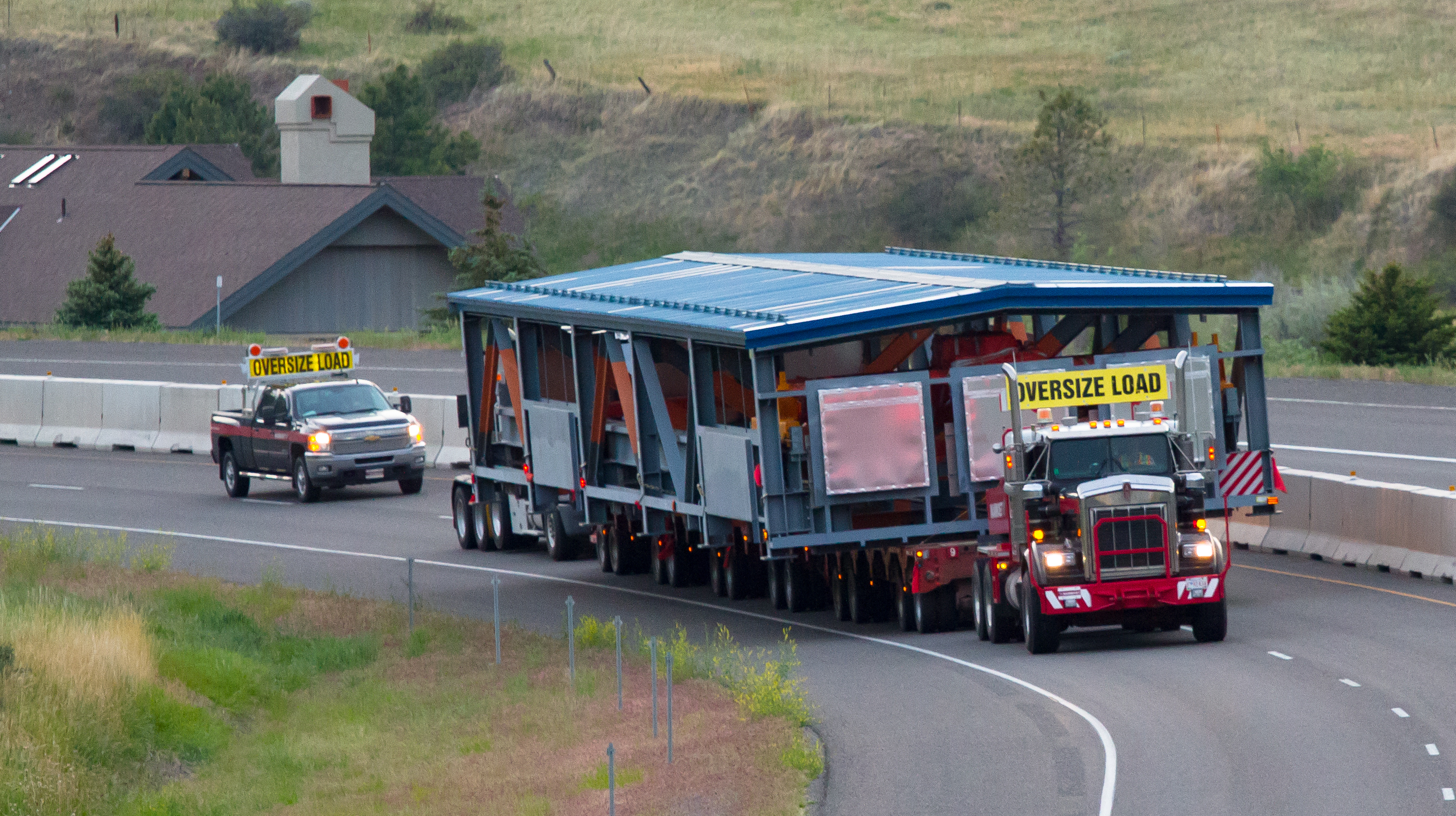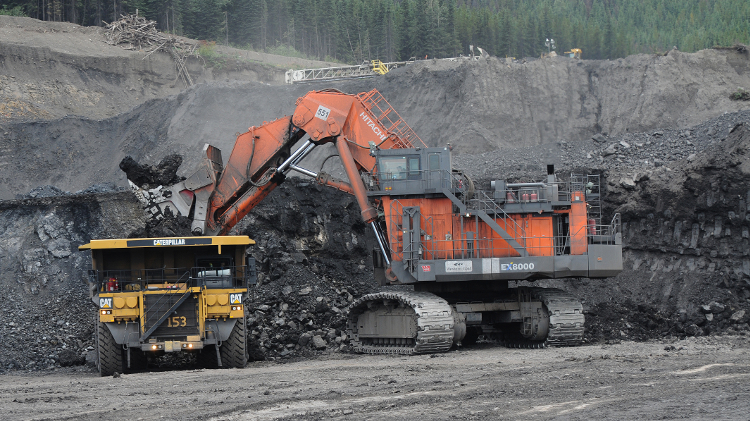When Bret Cousins suggested using a dust suppressant in the storage bins holding ore from Hudbay Minerals’ 777 mine (above) – which was to be processed at its Flin Flon concentrator – he was met with apprehension, inspiring him to develop his dust suppressant protocol. Courtesy of Hudbay Minerals
Bret Cousins first heard about the legendary over-frothing incident at Hudbay Minerals’ Flin Flon, Manitoba concentrator over dinner. Visiting the site as a representative of chemical supplier Ashland Water Technologies, he had suggested using a dust suppressant in the mill’s storage bins for ore from the 777 mine.
“There was a big, ‘Oh no, can’t be doing that,’” he recalled. Years earlier, the flotation circuit had overflowed with foam. Froth bubbles floated through the air and poured into the basement. The exact cause was never pinned down, but Hudbay suspected that someone had used a foaming-type dust suppressant in the mine that at that time supplied ore to the concentrator. A heavy dose of dust suppressant followed the ore into the float circuit, to spectacular effect. Since then, Flin Flon had been very cautious with its chemical use.
After listening to the story, Cousins commented: “You know, we could find out how much dust suppressant you can put in before it starts causing problems.” And so he did. Working together with Hudbay employees, Cousins developed a testing protocol in 2011 that showed how much of the dust suppressant he had recommended – a different, less foam-inducing type – could safely enter the flotation circuit. The paper he coauthored for the CIM Journal (Vol. 7, No. 2), with then-Hudbay metallurgist Cassandra Spence and Ashland colleague Brodie O’Rourke, details a testing regime he has found uncommon in mineral processing.
Dust suppressant and flotation kinetics
Cousins had a simple suggestion: Run the same lab test one normally would for a new flotation chemical on the dust suppressant, but do it with a range of dosages. A chemist by training, Cousins knew that concentration was key to chemical reactions. This is true of flotation chemicals themselves; for example, a collector might selectively react with chalcopyrite over pyrite when added at one concentration, but start picking up pyrite at a higher concentration because it has run out of chalcopyrite to bind to.
Non-flotation chemicals have the potential to alter reactions in the flotation tank as well, and the nature of their influence will depend on their concentration. For example, a tiny amount of flocculant lingering in recycled process water is unlikely to have adverse effects, but too high a concentration could encourage gangue minerals to float. High concentrations of dust suppressants can encourage a thick, tight foam that entrains too much gangue.
“Anybody’ll tell you that if you put enough frother in, you will be able to increase recovery but your grade goes down the toilet,” said Cousins, “because you’re basically floating everything at that point. The same goes for dust suppressants. The more you add, the thicker the froth, the lower the grade.”
But how much is too much? That was the question Cousins and his colleagues sought to answer. It would determine whether this dust suppressant could be applied to ore bins at Flin Flon. The required dose for effective dust suppression would have to be significantly less than the dose that would cause problems in the flotation circuit.
The protocol
O’Rourke, who had previously worked at Hudbay, ran the testing and data collection at Flin Flon. When Hudbay normally tests its concentrates for copper recovery, one-kilogram ore samples are ground with precise amounts of water and test chemicals, then fed into a 3.5-litre float cell. Initial conditions are monitored visually: How much froth is there? What colour is the slurry? What shape are the bubbles taking?
That visual monitoring and note-taking continues as the tank is aerated, treated with lime and sampled. Concentrate samples are skimmed off after one minute, 2.5 minutes, and 4.5 minutes; filtered; then assayed.
O’Rourke said this aspect of the test was practiced and straightforward. The main challenge was maintaining consistency between tests. “You use a spatula to lightly scrape bubbles off the top,” he explained, “and doing that in a consistent manner is probably the greatest unintended variable.” To account for human error, each test was duplicated.
To apply Cousins’ testing protocol to the dust suppressant, this procedure was carried out at four different dosages: 0 grams per tonne (g/t), 5 g/t, 25 g/t and 100 g/t. The first dosage was the control. The second was a typical figure for actual use. The third widened the range considerably, and the highest dose of 100 g/t was chosen because it seemed sufficiently extreme to showcase any dosage-related problems.
“Dust suppressants have a tendency to change bubble characteristics,” said Cousins. “We knew that. We just didn’t know at what dosage it was going to be a problem.” Normally he would prefer to build the dosage range logarithmically, doubling each dose to create the next, but time constraints necessitated a pared-down test.
The results
Testing the dust suppressant at Hudbay showed that it had little effect at a low dose and could augment froth formation at higher doses. At 25 g/t, frothing bubbles began to be noticeable before the tank was aerated. At 100 g/t, so much froth formed that it overflowed from the cell during the aeration stage.
Copper recovery stood higher than 90 per cent in the first sample at 100 g/t, which would be expected with more froth. The differences in recovery between the other dosages were not statistically significant.
The tests also showed that that froth formation encouraged gangue minerals to float – but only at the highest concentration. At 100 g/t, the total mass of recovered materials was much higher than at other dosages. The assayed grade of copper, despite that higher copper recovery, was lower by several percentage points. Zinc recovery was higher. At 5 g/t and 25 g/t, there was no significant difference in copper recovery or in copper-zinc separation when compared to the control.
Cousins concluded that the dust suppressant, recommended at the effective dose 5 g/t to 10 g/t, was safe to use in the bins as it was significantly lower than the 25 g/t dose where the first signs of bubble thickening began to appear.
If an accidental overdose did occur, then the visual monitoring lab notes could help diagnose it. That is one reason Cousins’ approach to protocol design includes a dosage highly likely to cause problems. “If someone happens to spill a drum or two of a particular chemical upstream, and suddenly your float circuit goes flat or foams like crazy, you know exactly what happened,” said Cousins. “If you suddenly see a different colour coming through your circuit, for instance, you go: ‘Isn’t that the colour we saw in that float test? Okay, let’s go find out if somebody spilled some of this reagent upstream.’”
Further applications
Since conducting their series of tests at Flin Flon, Cousins and his collaborators have moved on to other things. Cousins is now an independent consultant, O’Rourke is a production supervisor at Tolko Industries, and coauthor Spence is now working at Teck Resources. Cousins has not had the opportunity to introduce his testing protocol to other mine sites.
But there are numerous potential uses for the basic concept. Had there been unlimited time available, Cousins said a number of different chemistries could have been examined using this protocol. “We could have taken a look at individual copper ions, for instance,” he said. “If too much copper gets in the water, what will it do to the float circuit? We could have tried other dust suppressants and antiscalants.” Everything that makes its way into the circuit affects flotation kinetics in some way, but how and at what concentrations are the unknowns.
Cousins is particularly interested in the effects of buildup as a result of water recycling. This kind of increase over time could be included directly in the design stage before a mill is built.
“It’s fairly simple to implement anywhere,” he said. “If you’re going to be introducing a chemistry upstream of your flotation circuit, and you don’t know what it’s going to do, follow the protocol. And if it’s going to do something detrimental, you’ll at least know what dosage range it’ll take to do it. And if your dosage range is significantly under that, then you can implement the chemistry.”
The protocol may be simple to implement, but that does not mean its utility is immediately obvious to mining engineers. Cousins said he believes consciousness raising around feed chemistry could have a major impact on plant performance. “One of the things I’m doing with this kind of paper is saying, ‘This is the kind of the thing we can do to learn more about our circuits.’”




